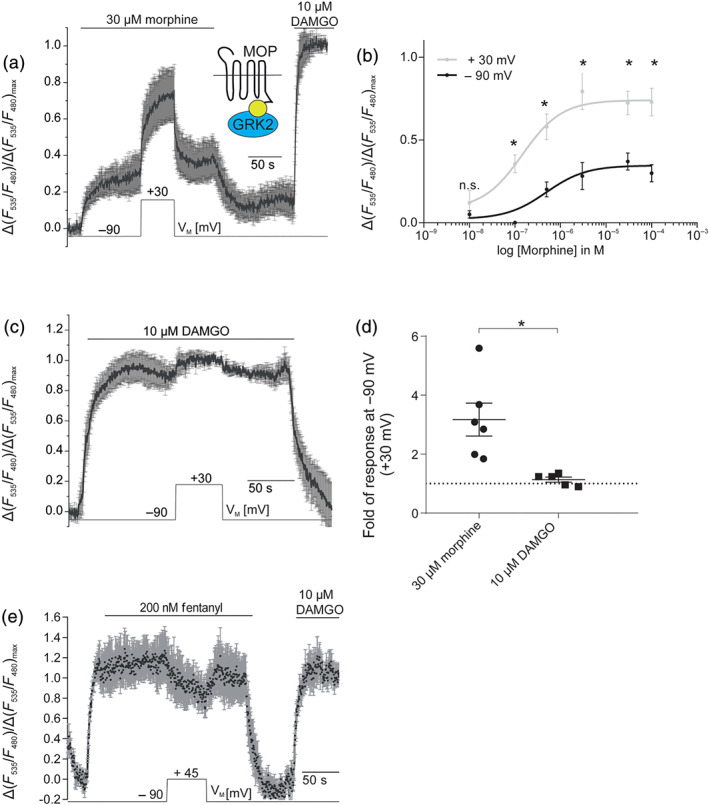FIGURE 5.

Efficacy of analgesics to recruit GRK2 is modulated by voltage. (a) Average (mean ± SEM; n = 6) of FRET recordings plotted as relative agonist evoked alterations in the sYFP2/mTur2 emission ratio. Morphine‐ or DAMGO‐induced GRK2 recruitment is reflected as an increase in FRET measured between sYFP2‐labelled μ receptors and mTur2‐labelled GRK2, as shown previously (Miess et al., 2018). For single emission traces, see Figure S4B. Depolarization from −90 to +30 mV reveals a robust enhancement of GRK2 recruitment to μ receptors upon morphine application. (b) Concentration–response curve was plotted based on averaged data collected as described in (a) at −90 and +30 mV at various concentrations of morphine (n = 5–16 per data point). *P < 0.05, significantly differences between data points measured at +30 mV compared with −90 mV at all concentrations except for 10 nM morphine; paired Student's t‐tests with Welch's correction. (c) Average (mean ± SEM; n = 5) of FRET recordings of μ receptor–GRK2 interaction upon application of 10 μM DAMGO. Cells were depolarized from −90 to +30 mV. (d) Summary of changes in μ receptor–GRK2 interaction upon depolarization from −90 to +30 mV under morphine or DAMGO application; responses were normalized to DAMGO response at 90 mV. *P < 0.05; unpaired t‐test; n = 5–6. Dotted line indicates voltage insensitivity as no change in signalling occurs upon depolarization. (e) Average (mean ± SEM; n = 5) of FRET recordings of μ receptor–GRK2 interaction upon application of 200 nM fentanyl. Cells were depolarized from −90 to +45 mV. (a, c, e) Maximum responses were determined upon application of DAMGO at −90 mV
